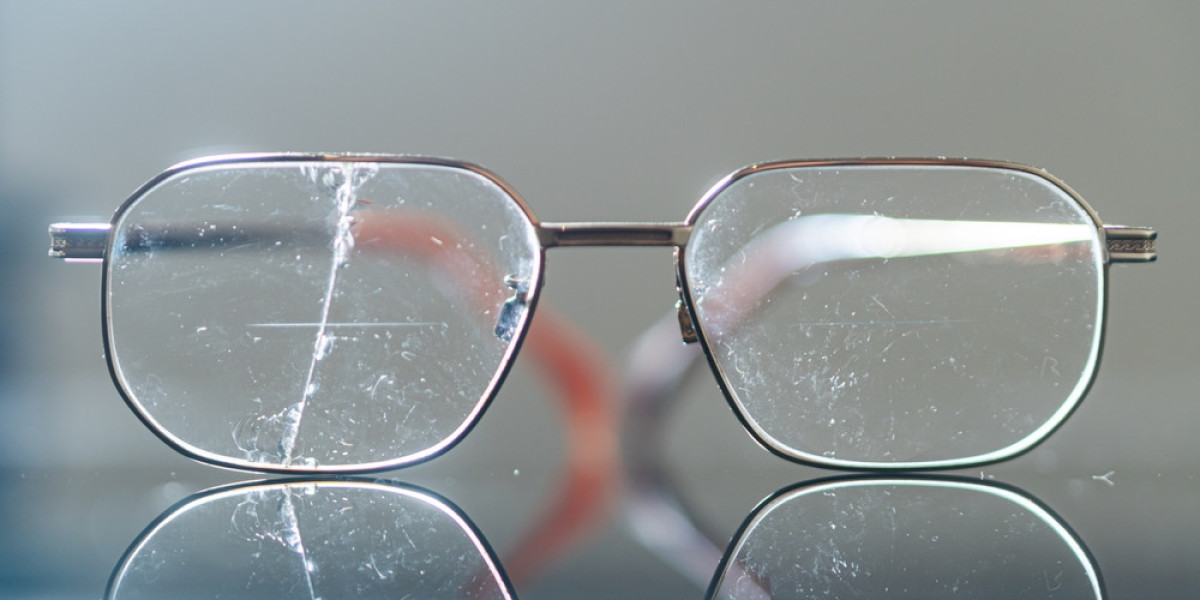We’ve all been there: your favorite pair of glasses, scratched and blurry, making everything look foggy and frustrating. Whether it’s a light surface scuff or a deeper scrape, scratches can seriously reduce the clarity of your vision, and replacing lenses isn’t always cheap.
Before you rush out to buy a new pair or pay for professional repair, consider trying some simple methods to fix scratched glasses at home. From household items like toothpaste to surprising tricks like banana peels, there are plenty of home remedies for scratched glasses you can try.
Below, we’ve gathered 15 tried-and-true DIY hacks to help you remove scratches from eyeglasses without special tools or a trip to the optician.
15 Clever DIY Ways to Fix Scratched Glasses at Home
1. Use Toothpaste for Light Scratches
How it works:
Non-gel toothpaste contains mild abrasives that can help buff out fine surface scratches.
Materials Needed:
- Non-gel white toothpaste
- Cotton ball or microfiber cloth
- Lukewarm water
Steps:
- Dab a small amount of toothpaste on the lens.
- Gently rub in a circular motion for 10 seconds using a soft cloth.
- Rinse with lukewarm water and dry with a clean microfiber cloth.
Caution:
Avoid using whitening or gel-based toothpastes—they can damage lens coatings.
2. Baking Soda Paste Solution
How it works:
Baking soda, mixed with water, creates a gentle abrasive paste to polish minor scratches.
Materials Needed:
- 1 tbsp baking soda
- A few drops of water
- Microfiber cloth
Steps:
- Mix baking soda and water to form a thick paste.
- Apply to the lens and rub in small circles for 20 seconds.
- Rinse and dry with a microfiber cloth.
Caution:
Only use on plastic lenses and avoid vigorous rubbing.
3. Rub Banana Peel on Lenses
How it works:
Banana peels contain natural oils and mild abrasives that can fill in fine scratches.
Materials Needed:
- Fresh banana peel
- Soft cloth
Steps:
- Gently rub the inside of a banana peel on the scratched lens.
- Wipe with a clean microfiber cloth.
- Repeat if needed.
Caution:
It may not work for deep scratches.
4. Use Vehicle Wax or Furniture Polish
How it works:
These polishes fill in small scratches and leave a temporary smooth finish.
Materials Needed:
- Car wax or furniture polish
- Cotton swab or soft cloth
Steps:
- Apply a small amount of wax to the lens.
- Buff in a circular motion.
- Wipe off excess with a clean cloth.
Caution:
This is a temporary fix and may cause lens glare or build-up over time.
5. Apply Dish Soap and Microfiber Cloth
How it works:
This method helps clean the lens thoroughly and sometimes reduces the visibility of light scratches.
Materials Needed:
- Mild dish soap
- Warm water
- Microfiber cloth
Steps:
- Mix a drop of dish soap with water.
- Gently wash the glasses.
- Dry with a microfiber cloth using a gentle circular buffing motion.
Caution:
Only works on superficial scratches.
6. Try a Glass Etching Cream (Plastic Lenses Only)
How it works:
Glass etching cream removes the outer layer, including scratches, on plastic lenses.
Materials Needed:
- Etching cream (with hydrofluoric acid)
- Cotton swab
Steps:
- Apply a small amount of cream to the scratched area.
- Leave for 5 minutes.
- Rinse thoroughly and wipe clean.
Caution:
Never use on glass lenses or coated lenses. Highly abrasive—handle with care.
7. Use Baby Oil or Petroleum Jelly
How it works:
These substances can fill in scratches and reduce their visibility.
Materials Needed:
- Baby oil or petroleum jelly
- Cotton swab
Steps:
- Dab a small amount on the scratch.
- Buff with a clean cloth.
Caution:
Temporary and may smear vision—clean before wearing.
8. Use Lens Cleaning Spray and Buffing Cloth
How it works:
Specialized sprays clean and smooth the surface, minimizing light scratches.
Materials Needed:
- Lens cleaner spray
- Microfiber cloth
Steps:
- Spray both sides of the lens.
- Buff gently in circular motions.
Caution:
Doesn’t remove scratches, but it may make them less visible.
9. Apply Clear Nail Polish (Temporary Fix)
How it works:
Fills in small scratches, reducing distortion.
Materials Needed:
- Clear nail polish
- Cotton swab
- Nail polish remover (acetone-free)
Steps:
- Lightly coat the scratch with clear polish.
- Let it dry fully.
- Gently wipe excess with nail polish remover.
Caution:
Do not use if your lenses have an anti-reflective coating.
10. Try a Commercial Glasses Scratch Repair Kit
How it works:
These kits contain polish and instructions specifically designed for lens repair.
Materials Needed:
- Kit (available online or in pharmacies)
Steps:
- Follow the instructions included in the kit.
- Buff scratches using the provided solution.
Caution:
Some work better than others—read reviews before purchase.
11. Use Vinegar and Baking Soda Combo
How it works:
The fizzing reaction gently lifts particles and can slightly reduce the scratch appearance.
Materials Needed:
- White vinegar
- Baking soda
- Cotton ball
Steps:
- Make a fizzy paste with 1 tbsp vinegar and baking soda.
- Apply and buff gently.
- Rinse thoroughly.
Caution:
It may not be suitable for coated lenses.
12. Clean with Rubbing Alcohol and Water
How it works:
This mix acts as a cleaning agent and can help smooth minor marks.
Materials Needed:
- 1 part rubbing alcohol
- 3 parts water
- Spray bottle and soft cloth
Steps:
- Spray solution on lenses.
- Wipe gently with a microfiber cloth.
Caution:
Avoid using pure alcohol—it can damage coatings.
13. Use a Pencil Eraser for Surface Marks
How it works:
A clean rubber eraser can buff away very minor surface scratches.
Materials Needed:
- White pencil eraser
Steps:
- Rub lightly over the scratch.
- Wipe clean with a soft cloth.
Caution:
Not suitable for deep scratches.
14. Coconut Oil Buff
How it works:
Coconut oil may fill and smooth tiny abrasions temporarily.
Materials Needed:
- Coconut oil
- Cotton swab
Steps:
- Apply a dot of oil to the lens.
- Buff gently and wipe away residue.
Caution:
Temporary and might attract dust.
15. Use Optical Spray with Anti-Scratch Agent
How it works:
Some sprays contain special agents that reduce the appearance of scratches.
Materials Needed:
- Anti-scratch optical spray
- Microfiber cloth
Steps:
- Spray both sides of the lenses.
- Buff gently in circular motions.
Caution:
Make sure the product is safe for your lens type.
What Not to Use on Scratched Glasses
Trying to fix scratched glasses at home doesn’t mean trying everything under the sun. Avoid the following to prevent further damage:
- Tissue paper or paper towels (can leave micro-scratches)
- Harsh chemicals like bleach or ammonia
- Toothpaste with whitening agents or microbeads
- Glass cleaners with alcohol (can remove coatings)
- Sandpaper or abrasive cloths
When to See a Professional
If your lenses have:
- Deep, gouging scratches
- Cracked coatings
- Distorted vision after trying home remedies
…it’s best to consult a professional. Sometimes, no amount of DIY glasses scratch repair can restore full clarity.
FAQ: Fix Scratched Glasses at Home
Can I use toothpaste to remove scratches from glasses?
Yes, as long as it’s non-gel, non-whitening toothpaste. It helps reduce surface scratches on plastic lenses.
Will baking soda damage coated lenses?
It might. Avoid using on lenses with anti-reflective or UV coatings unless you're sure they can handle mild abrasives.
How often should I clean my glasses to prevent scratches?
Clean daily with a microfiber cloth and lens cleaner. Avoid wiping dry lenses to prevent friction damage.
Is there a way to remove deep scratches?
DIY methods may reduce their appearance, but for deep scratches, lens replacement is usually necessary.
Can I use vinegar alone to clean my glasses?
It’s best diluted with water. Pure vinegar can be too acidic and might affect coatings.
Conclusion: Fix Scratched Glasses at Home the Smart Way
Scratched glasses are annoying, but before you spend money on new lenses, try these 15 clever ways to fix scratched glasses at home. From toothpaste on scratched lenses to DIY polish tricks, there’s a good chance one of these will improve your vision clarity.
Start with the least abrasive method and test on a small area. Proper care—like using a microfiber cloth and storing your glasses in a case—can prevent future damage.
Which method worked best for you? Let us know in the comments!



